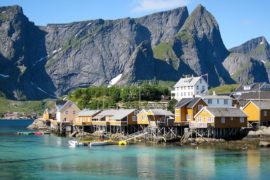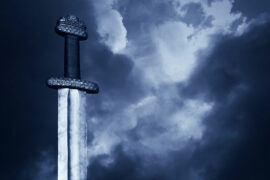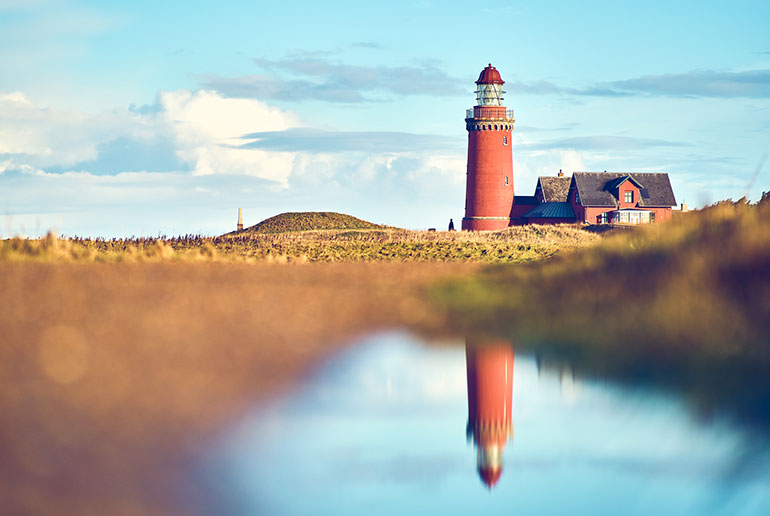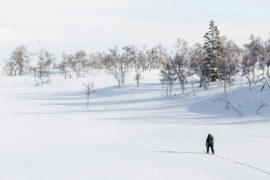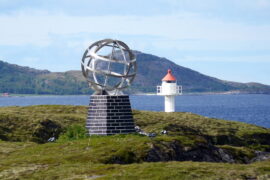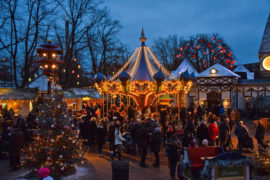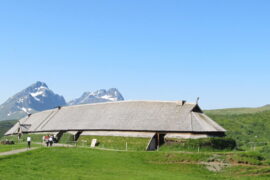Scandinavia is a fun region to visit at any time of the year. However, it’s also huge – more than twice the size of California – and encompasses a wide range of climates, topography and physical landscapes.
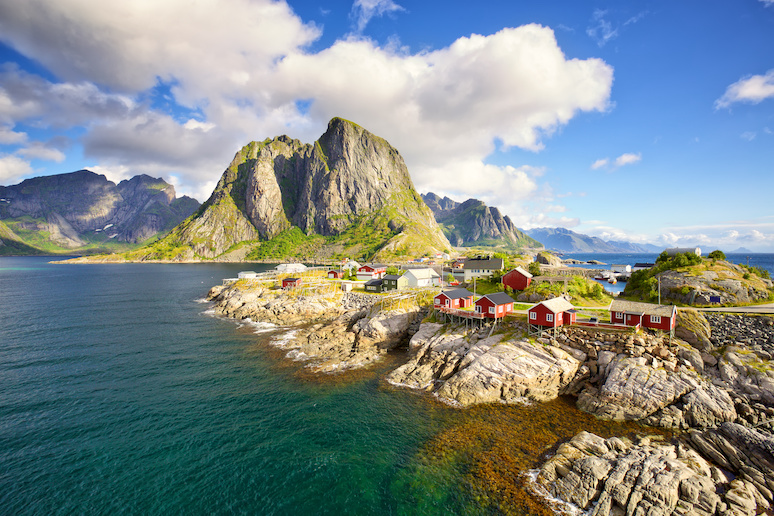
From the long fjord-indented coastline of Norway in the west that is warmed by the Gulf Stream to the pretty islands of the Stockholm archipelago in the east and the frozen landscapes of Lapland in the north, it’s a region as varied as it is big.
And whilst the region has a multitude of fun things to see and do year-round, you’ll have a very different experience depending on when and where you visit.
A summer trip to the wide sandy beaches of the southern Danish islands will be completely different to a winter trip to the snowy forests and frozen lakes of Lapland.
So, we’ve compiled this guide to help you decide when’s the best time to visit Scandinavia.
The 4 main seasons
The best things to do by season
Major events by month
The cheapest time to go
The 4 main seasons in Scandinavia
Scandinavia stretches from Gedser Odde in Denmark at 54.5° North up to Kinnaroden in Norway at 71° North.
And if you include the Norwegian island of Svalbard, the most northerly point is Rossøya, at 80.5° North, just 640 miles short of the North Pole.
So, the climate varies enormously within the region. And the weather changes dramatically from season to season – sometimes even from hour to hour! – so it’s important to know what sort of conditions you can expect and when.
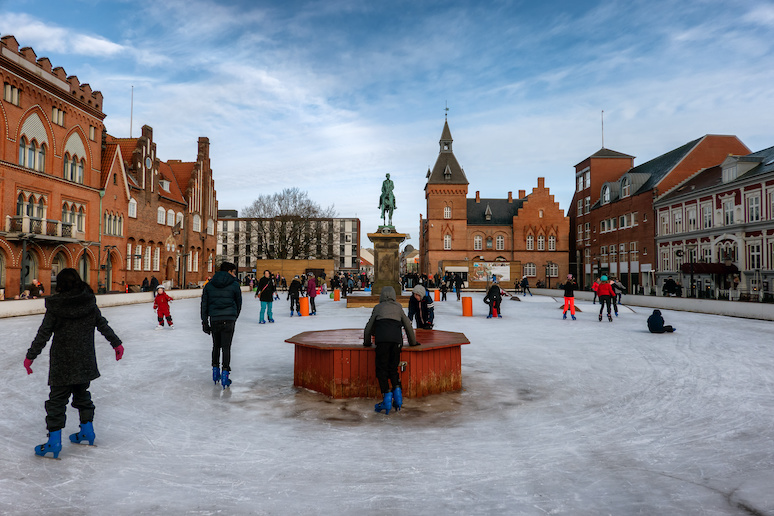
Clearly, some activities can only be done at certain times of the year.
The midnight sun, for example, can only be seen at the height of summer above the Arctic Circle, while husky sledding and snowmobile trips are winter activities that need decent snow cover.
Winter
This is usually considered to run from December to February, though snow can stay on the ground through to March and even April on higher ground and north of the Arctic Circle.
Denmark is the most southerly Scandinavian country and winters here are generally cold, with temperatures hovering around 0℃.
There is sometimes some snowfall around Copenhagen, but it’s usually light and rarely settles for long. You’re more likely to experience wind and rain in the Danish capital in winter.
Jutland is the region of Denmark that gets the most snow – Greenland excepted – and cross-country skiing is possible here, but since the entire country is relatively flat, there are no real downhill ski resorts.
The shortest day (December 22nd) in Denmark has under seven hours of daylight, so be prepared for long dark evenings.
Winter in Sweden is milder in the southwest corner of the country, which is warmed by the Gulf Stream, so winter temperatures in cities such as Malmö and Gothenburg average around 0–2℃.
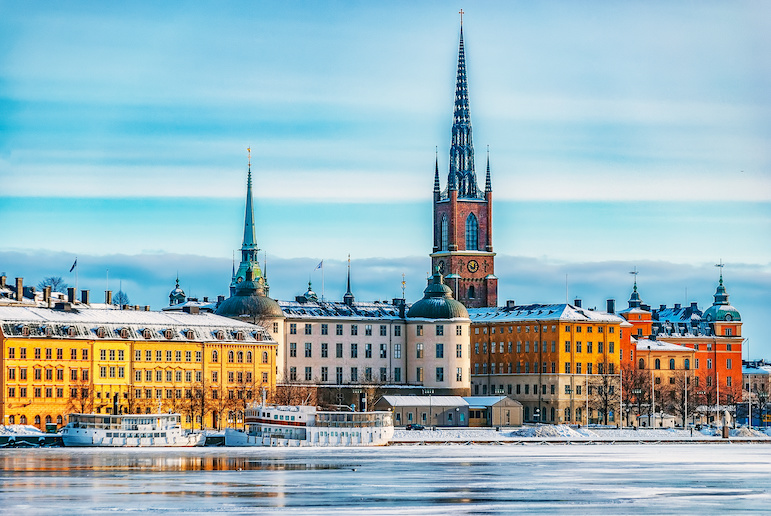
Stockholm, on the east coast is colder at about -2℃, while northern towns such as Jokkmokk and Kiruna in the Arctic Circle average around -10℃.
Stockholm has just six hours of daylight in mid-winter, and once you get north of the Arctic Circle, it’s dark for 24 hours a day in mid-December.
Since Norway is so mountainous, winter can be bitterly cold and snowy inland, giving rise to the beautiful images of snow-clad mountains that we associate the country with.
However, the Gulf Stream keeps the long western coastline fairly temperate and the sea rarely freezes.
Winter temperatures in Bergen average around 2℃, and rain is far more common than snow – in fact, it’s generally regarded as the wettest city in Europe.
Oslo, on the east coast, is colder at about -3℃ and Tromsø in the north averages around -4℃.
Oslo has around six hours of daylight in mid-winter, while in Kirkenes in the far north the sun sets on November 27th and doesn’t rise again until January 15th.
Spring
Spring runs from March until the end of May, although early March (and even April) can still feel very wintery in many parts of the region.
In fact, spring is the prime skiing and snowboarding season in Scandinavia, thanks to the good snow, slightly milder temperatures and a bit more daylight.
Daylight saving kicks in at the end March in all the Scandinavia countries, making the evenings lighter for longer.
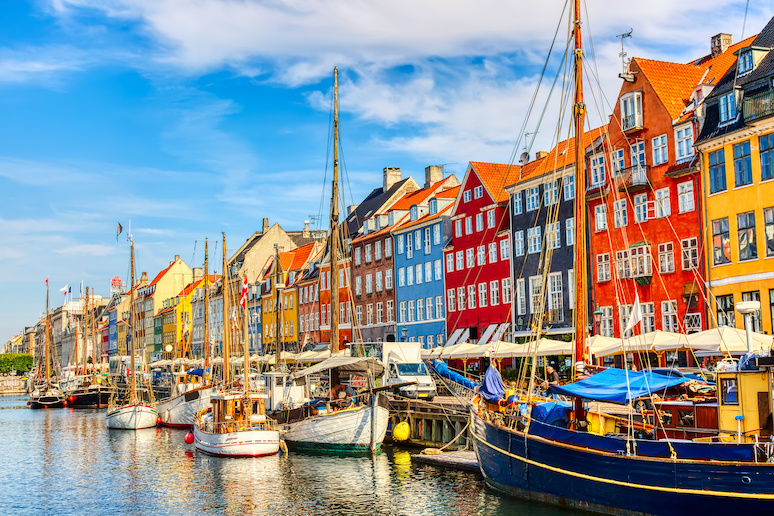
Spring in Denmark starts cold but as soon as the first rays of sun start to appear, the trees bloom with blossoms and the gardens fill with colourful spring flowers.
By May, Copenhagen sees average daytime temperatures of around 12℃, the days lengthen and the streets and parks start to fill with people, pavements cafés and life.
In Sweden, Spring sees a huge variation in temperatures and weather. Early March can still see temperatures of below 0℃, even in the southern cities, while in May when the sun is out, it can get up to around 15℃.
Melting snow means that the country’s waterfalls are particularly dramatic in Spring, with wildflowers in the woods and forests making hiking a joy.
Spring in Norway can mean anything from skiing to sunbathing! In northern resorts, such as Narvikfjellet, snow cover can last as long as mid-May, while in the sheltered fjords, the south-facing slopes fill with apple blossom.
It’s a great season for walking and cycling, though bear in mind how quickly the weather can change, and come prepared.
Summer
Summer (June to August) is the classic time to visit Scandinavia, when the days are long and the sun is at its warmest.
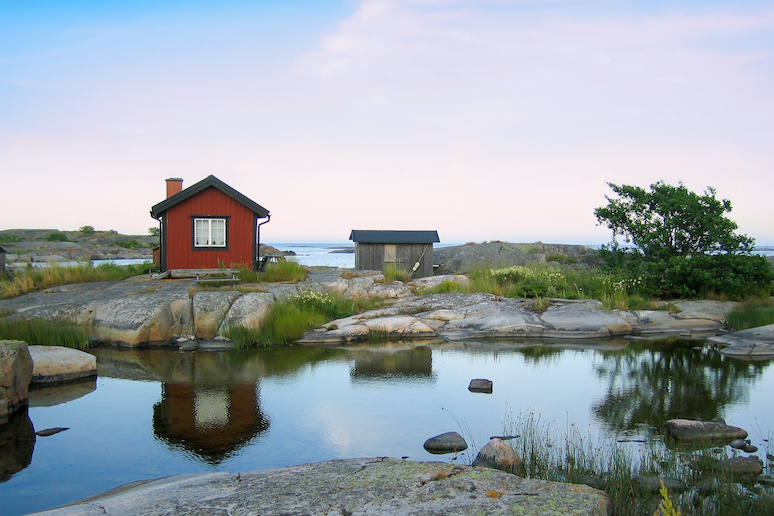
In northern Norway and Sweden, there are 24 hours of daylight in mid-summer and in Kirkenes in the far north of Norway, the eerie midnight sun lasts from May 17th to July 21st.
In the southern cities of Oslo, Stockholm and Copenhagen, people picnic in the parks and pavements cafés fill the streets.
Sailing is popular round the Stockholm and Gothenburg archipelagos and the Danish islands. Boat trips and swimming off sandy beaches and rocky islands is a regular pastime, though the water temperature rarely exceeds 18℃.
Many Scandinavians aid their fresh wild swims with a warming stint in the sauna afterwards.
Autumn
Even by the end of August, autumn is making itself felt in Scandinavia with the evenings drawing in and the nights feeling cooller.
That said, autumn (September to November) can still be a beautiful time to visit, particularly the Swedish forests with the foliage in full autumn colours.
Foraging is also popular at this time in Denmark, Norway and Sweden, with mushrooms, berries, rosehips and strawberries all growing wild.
Early autumn is a good time for hiking, though by November winter is making itself felt with snow already falling in the mountains and some of the Norwegian passes already becoming impassable.
Our favourite experiences by season
Since the differences in weather between summer and winter are so huge, some activities are only possible at certain times of the year. So here are are some of our favourite seasonal activities.
What you can do in winter
Winter is the only time of year that some activities are available, usually those that involve snow.
One of our favourites is snowmobiling, and we think this exciting snowmobile trip across the frozen lakes of the Finnmarksvidda mountain plateau in Norway is a real adventure.
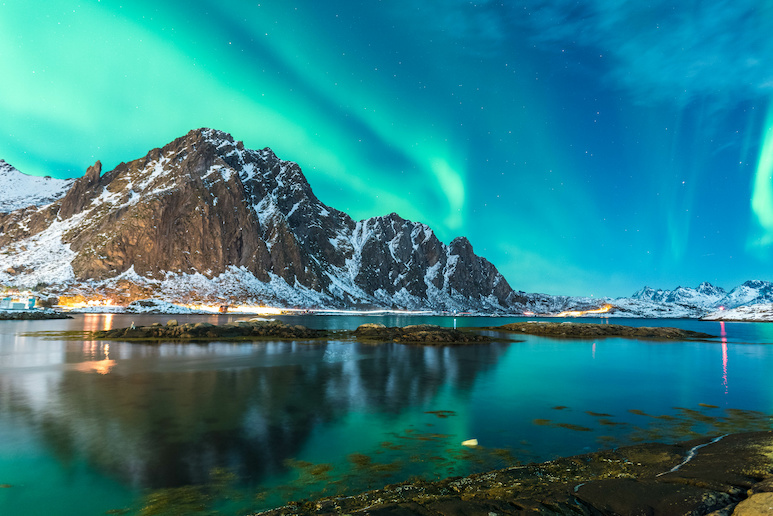
Dog-sledding is also a popular winter activity – we love this trip from Tromsø in Norway, where you make friends with the dogs at their kennel, learn how to “mush” and drive a team of huskies over the Arctic snow.
Ice-fishing and snowshoeing are two more activities that can only be done in winter – and this tour from Kiruna combines both in one fun trip.
The northern lights can only be seen when it’s dark so winter is the best time to go aurora spotting.
A great place to see the northern lights in winter is Abisko in Sweden, where there’s no light pollution and skies are often clear. We really like this tour to Abisko, with an experienced guide who can ensure you get the best views and pics of the lights.
The Icehotel in Sweden is rebuilt every winter from blocks of frozen ice, so from December to April you can stay in a room carved out of ice and decorated with ice sculptures. (There is year-round accommodation on site too if you want to visit in summer!)
Check out our guide for more on this amazing hotel (and how to see it without spending a tonne of cash).
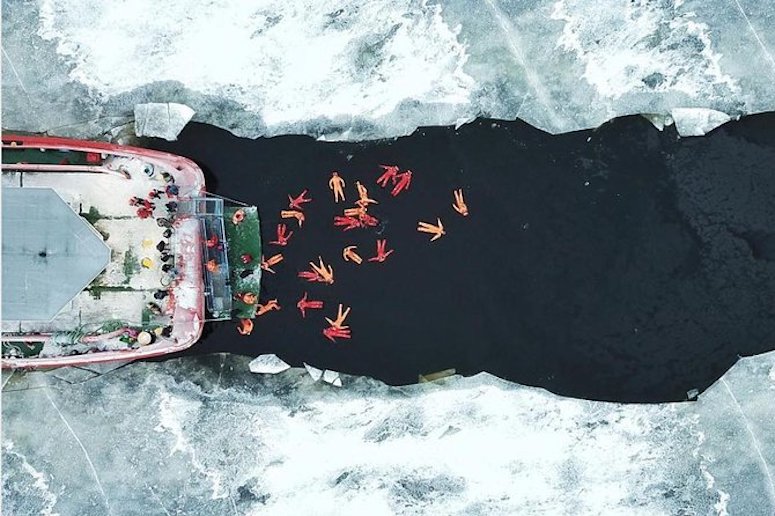
And for a real exhilerating, out-there winter experience, we love this trip on an icebreaker ship in Sweden, where you get to float around in the freezing sea in a survival suit, surrounded by ice bergs!
What you can do in spring
Spring is a great time for hiking. The evenings are longer, the weather is milder and the hillsides and valleys are covered in wild flowers and blossom.
Hiking in Norway’s fjords is particularly good in spring, and our favourite fjord hike is to the top of Pulpit Rock, site of the infamous Tom Cruise fight in Mission Impossible: Fallout.
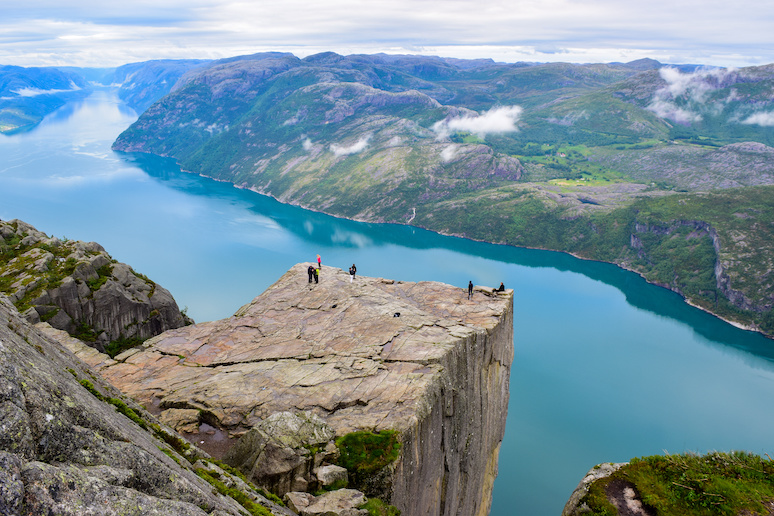
This fabulous guided tour gets you up to the top of the rock at sunrise – yes, it’s an early start, but we think it’s well worth it for the views and because there are fewer other hikers around at this time of the day.
Spring is also a good time to explore the cities. Oslo, Stockholm and Copenhagen are all waking up after the winter and there’s more life on the streets.
A bike tour is a great way to see Copenhagen, in particular, which is well geared up for cyclists with plenty of dedicated bike lanes.
We like this fun guided bike tour, because it takes in all the city’s main sites, including the royal palaces and the Little Mermaid.
What you can do in summer
Camping – or glamping if you prefer a little comfort – is the best summer activity. Sweden, Norway and Denmark all have some great summer campsites, where you can pitch up by a lake, a river or on an island.
We love this beautiful summer-only site in the remote Lofoten islands, where you can set up your tent right by the beach, with sea and mountain views (there are also cabins for year-round rental).
Summer is also the time when the locals head out of the city to the islands and archipelagos, to spend their days swimming, fishing, kayaking and eating seafood.
The Danish islands of Bornholm, Møn and Ærø are popular summer destinations. We like this day trip from Copenhagen to Møn to explore the island’s dramatic sea cliffs and national park.
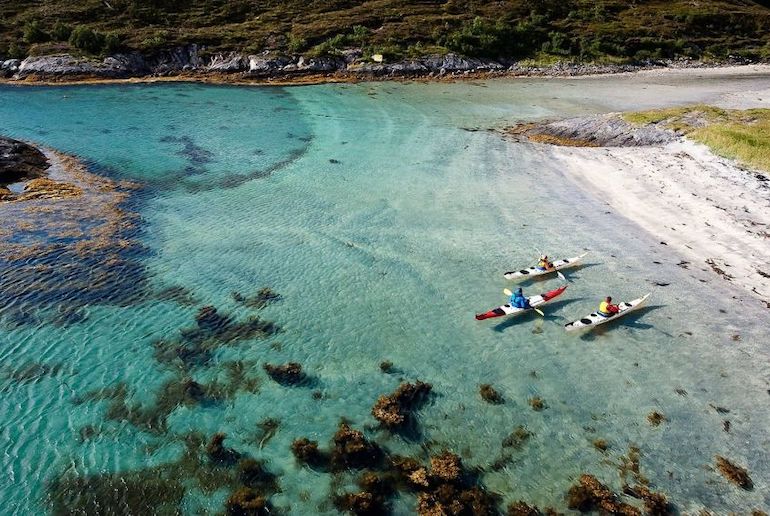
In Sweden, the islands of the Stockholm and Gothenburg archipelagoes are filled with holiday-makers, sailors and kayakers.
On this fun two-day kayaking trip in the Stockholm archipelago, you’ll paddle around looking out for wildlife, camp on an island and cook on a campfire. We like it because it combines a few of our favourite summer activities – camping, kayaking and swimming.
If you prefer to sail, we recommend this full-day trip round the islands on a luxury yacht with lunch included. Or why not push the boat out and charter your own yacht? Click here for more ideas on how to rent your own boat.
What you can do in autumn
Autumn is a good time to check out some museums, visit a theme park, take a boat trip and make the most of the legendary Scandinavian café life.
Oslo has some great museums, including the Munch Museum, the Kon-Tiki Museum, the Maritime Museum and the Norwegian Folk Museum.
Admission to all of them is included in the Olso Pass – check out our guide to see if it’s worth buying.
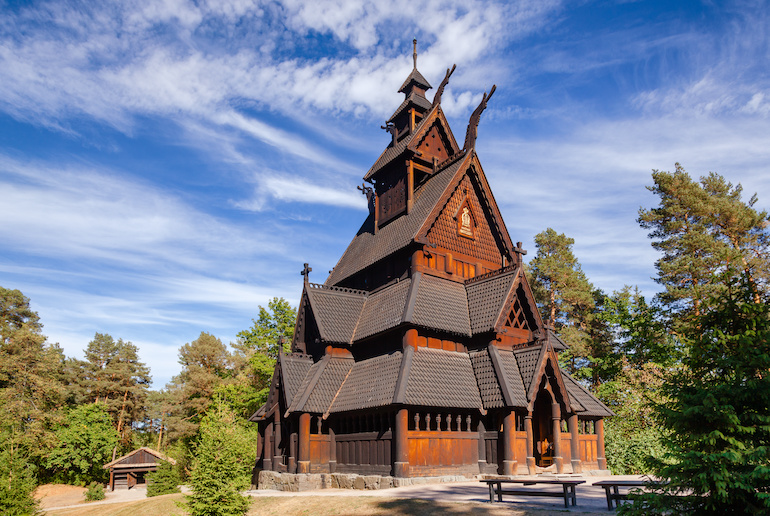
We also recommend visiting the original Legoland in Billund, Denmark in autumn, because it’s quieter once the schools have gone back and there’s plenty to do indoors if the weather is bad.
A trip on an amphibious bus in Gothenburg is fun, because it combines seeing the city sights with a ride on the water – and it doesn’t matter if the weather is poor.
Or sample some of Stockholm’s famous fika on this fun coffee and pastry tour, that includes some of the city’s best baked goods.
Early autumn is also a good time to tackle long-distance hikes, such as the iconic Kungsladen, Sweden’s longest hiking trail at 430km.
There are fewer midges and other hikers around at this time of year, though the evenings can be cool. The mountain huts stay open and access buses run til the end of September.
Major events by month
You may want to time your trip to coincide with some of Scandinavia’s many festivals or cultural celebrations. Here’s our month by month guide to the best of them. For more info on what’s on where, check out our upcoming Events guide.
January
- Listen to the classics beneath the polar night at the Tromsø Northern Lights Festival of classical music.
February
- Chill out at the world’s northernmost jazz festival. Top jazz acts head up to Longyearbyen in Svalbard to play throughout the polar night at Polarjazz in early February.
- Celebrate Sami culture at the Jokkmokk Winter Fair. Dressed in their colourful costumes, Sami from across Lapland converge on the town of Jokkmokk to trade reindeer fur, traditional arts and crafts, and to socialise.
March
- Watch the Vassolopet, Sweden’s long-distance cross-country ski race where competitors compete to complete a gruelling 90km route on the first Sunday in March.
- Eat waffles on Våffeldagen. A whole day devoted to eating waffles? Yes, please! Waffle Day is on March 25th in Sweden, when the whole country eats waffles topped with cloudberry jam and cream.
April
- Sample a classic Swedish smörgåsbord at Easter, and watch the children visiting local houses dressed as witches.
- For a night of bonfires, fireworks, folk-singing and fun, aim to be in Sweden on April 30th for Walpurgis Night, when the Swedes celebrate the abbess St Valborg.
May
- Join the party in Aalborg. This Danish town hosts northern Europe’s biggest carnival, which lasts for a week in May culminating in a huge parade of 60,000 people, watched by a further 100,000 spectators.
June
- Visit Skansen for Swedish National Day (June 6th). Join the Swedish king and queen at Stockholm’s huge open-air museum, while the locals wave flags and dress in national clothes.
- Join in the Midsummer madness. All the Scandinavian countries celebrate Midsummer on a Friday between 19th–25th June, but it’s a particularly big deal in Sweden, with dancing round the maypole, games, singing and, of course, loads of eating and drinking.
July
- Visit the Viking games. Viking markets, sports, traditions and celebrations take place from the end of June to early July in Frederikssund in Denmark.
- Party at one of Europe’s biggest music festivals, the Roskilde festival in Denmark where big-name music acts play in early July. Top names from the 2024 line-up include Doja Cat, Foo Fighters, Sza and Skrillex.
August
- Try surströmming, the world’s stinkiest food at a “fermented herring” party in Sweden on the third Thursday in August.
September
- Get some night culture in Oslo. On a Friday in mid-September, Oslo’s theatres, museums and galleries stay open late with free admission, while the streets fill with live music, street theatre and performance art for the annual Oslo Kulturnatt.
October
- Visit Copenhagen’s Tivoli Gardens on October 31st for its spectacular Halloween light displays and illuminations.
November
- Eat cake on Gustav II Adolf’s Day. November 6th is when Gustav II Adolf is remembered in Gothenburg with local bakeries selling tasty cakes decorated with chocolate or marzipan figures of the king.
- See Bergen light up at the end of November, when 30,000 people gather at the city’s Ole Bulls Plass for the Bergen Festival of Lights.
December
- Celebrate St Lucia Day on December 13th. This low-key commemoration of the martyr St Lucia is celebrated across Sweden with candle-lit processions and lussekatter (saffron buns).
- Visit a Christmas market. Scandinavia is celebrated for its Christmas markets, including the Hans Christian Andersen market in Odense in Denmark and Stockholm’s Old Town Christmas market. See our guide for more Nordic Christmas markets.
- See the new year in with a sea swim. Yes really! At 11am on December 31st in the town of Søndervig on Denmark’s west coast, they celebrate the new year by a dip in the sea, followed by champagne, oysters and a slice of Danish new year cake, kransekage.
When is the cheapest time to go?
Peak time in Scandinavia is around Christmas and New year in northern tourist towns offering winter experiences and northern lights tours, and June to August on the islands and beach towns and villages.
It’s worth noting that many Scandinavian ski resorts also fill up during sportlov (in February) and during Easter, pushing prices higher.
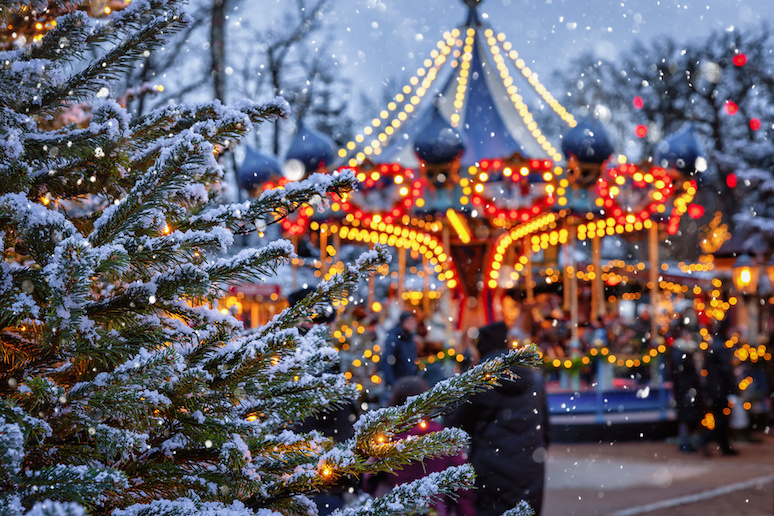
In Norway’s fjordland, Sweden’s archipelagos and on the Danish islands, accommodation is at its priciest during the summer school holidays.
That said, the capital cities of Stockholm, Oslo and Copenhagen can be surprisingly affordable in the peak summer months, since many locals head out to their summer houses in the country or by the sea.
November and February/March are usually considered the cheapest months (except for in the ski resorts), when demand for accommodation and activities is lower.
Although, of course, you have to balance this with the shorter days and colder, wetter weather.
It’s worth noting that Scandinavian school holidays tend to be earlier than in the UK in summer, with most schools breaking up in mid-June and returning in mid-August.
So what’s the best time to visit Scandinavia?
There’s something magical about the summer in Scandinavia, with its endless hours of daylight, while the deepest depths of winter can be hugely atmospheric and picturesque with everything covered in snow.
But it’s also worth considering the shoulder seasons, when things are less busy and you can chose from a great mix of different activities.
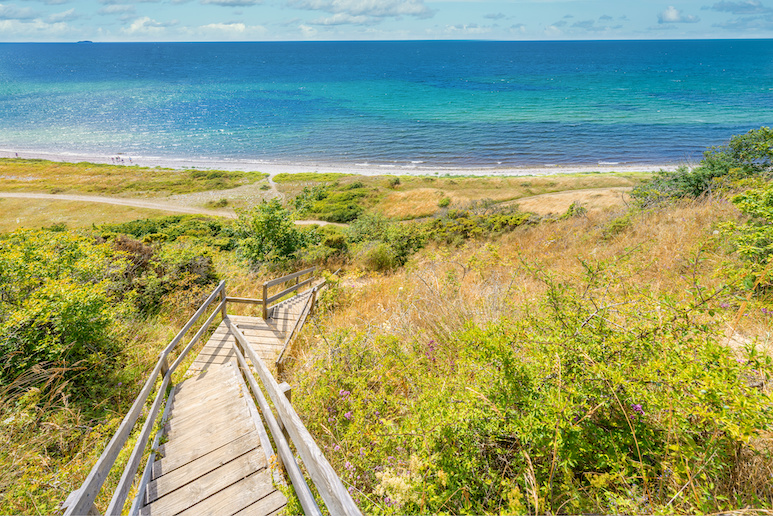
Overall though, our favourite time to go is in early June, before the schools have broken up, when we can enjoy long evenings, mild weather, kayak trips, hiking and swimming in the sea – and maybe even some unbroken sunshine!
For more on visiting Scandinavia at our favourite time of year, see summer in Denmark, the best Nordic beaches and spending a summer weekend in Stockholm.
See also:
The best time to visit Sweden
The best time to visit Norway
The best time to visit Denmark

